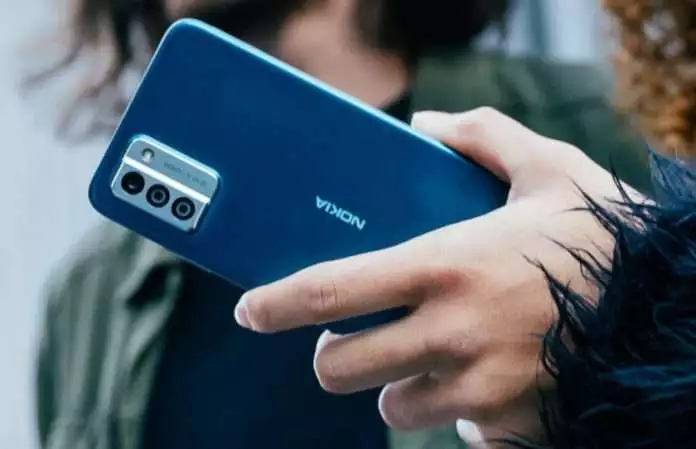Nokia offers a variety of low-cost cellphones. However, the Nokia G22 review has a distinct selling point that sets it apart from the rest of the lineup – and the market as a whole.
The G22’s design is intended to be repairable, which means you should be able to change the battery, display, and other parts at home without having to visit a specialized shop.
In principle, this should save both time and money, and it is consistent with HMD Global’s vow (as the current producer of Nokia-branded phones) to make its devices more environmentally friendly. But how does this low-cost purchase fare? Everything you need to know is right here.
Design & Build
- Repairable build
- IP52 rating
- Headphone jack
The Nokia G22 is available in two colors: Meteor Grey and Lagoon Blue, the latter of which I tried. While the recycled plastic back has a nice shine to it, it is very susceptible to fingerprints. It also doesn’t appear as nice as some other Nokia phones, such as the C32, with its glossy glass back, but that’s the price you pay for a repairable build.
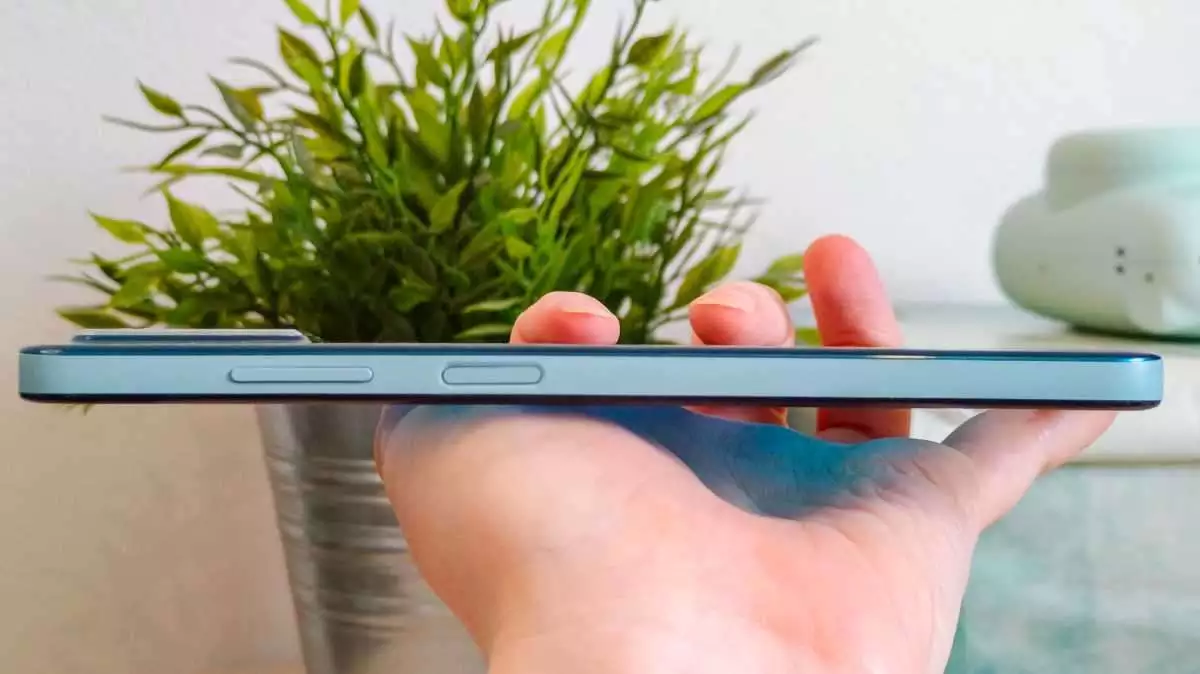
At 195g, the phone is fairly light, however it isn’t the thinnest I’ve used. Nonetheless, it is simple to use with one hand and will fit in larger pockets. The phone comes with a transparent casing, and it has an IP52 classification, which means it can withstand mild water spray but not a dunk in the pool (or toilet).
There is a side-mounted power button with an embedded fingerprint sensor that I found to function very reliably. If you like, you may use facial recognition or an old-fashioned password.
This phone, luckily, includes a headphone port, which is a pleasant addition given that many other smartphones have abandoned them in favor of USB-C earbuds and wireless bud connections. The dual SIM slot also allows you to utilize two physical SIM cards, or you may use one SIM and a microSD card to enhance the phone’s capacity.
The Nokia G22’s main selling feature is its repairable design. In principle, you should be able to replace the battery, display, charging port, or rear cover if they get damaged or cease to function.
The phone does not come with a construction kit or spare parts. However, a kit costs only £26.99, and purchasing the necessary components on top of that should cost less than going to a shop. In fact, you don’t even need a tool kit; if you have a Phillips screwdriver, tweezers, and a guitar pick, you should be able to make simple repairs at home.
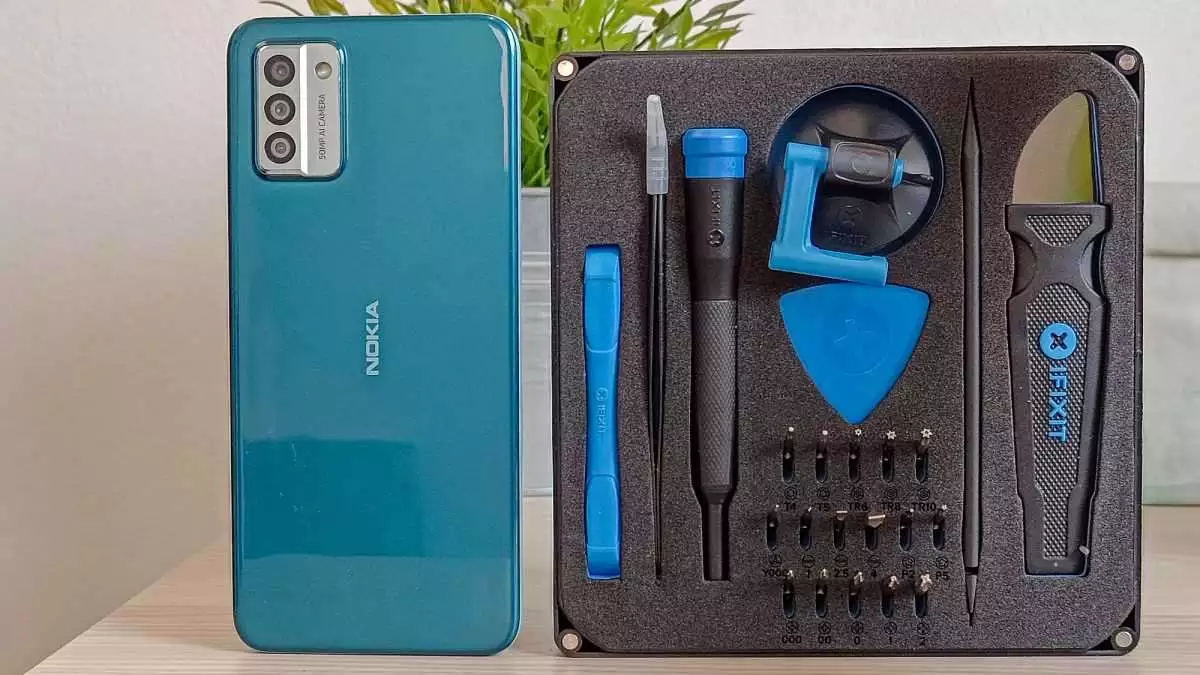
In lieu of not having a new part, I chose to go through the procedures of’replacing’ the battery (i.e., pulling it out and then putting it back in). I followed the iFixit tutorial, which states that it takes less than five minutes.
While I’ve seen the task completed in this time by a Nokia representative, the average user is unlikely to complete it in this time – especially if you’re as cautious as I am. To decrease the danger of fire, switch off the phone first and make sure the battery is below 25%.
Not only does this phone save people money, but it’s also much better for the environment.
It was difficult to undo the fasteners that opened the rear cover, especially in the corners. After removing the fingerprint sensor and the motherboard cover, extracting the battery from the extremely strong adhesive needed far more effort than my noodle arms could muster.
After a brief panic episode in which I believed I’d ruined the phone by not properly reattaching the battery wire, I rebuilt it and had a functional G22 – as good as new.
The method is a little intimidating at first, but after one attempt, I felt more competent – plus the iFixit manuals describe the processes in great depth. However, this is not a five-minute task for inexperienced workers. With all the fumbling and flaws, it took me over 30 minutes and might take others more depending on how strong the glue is on the battery.
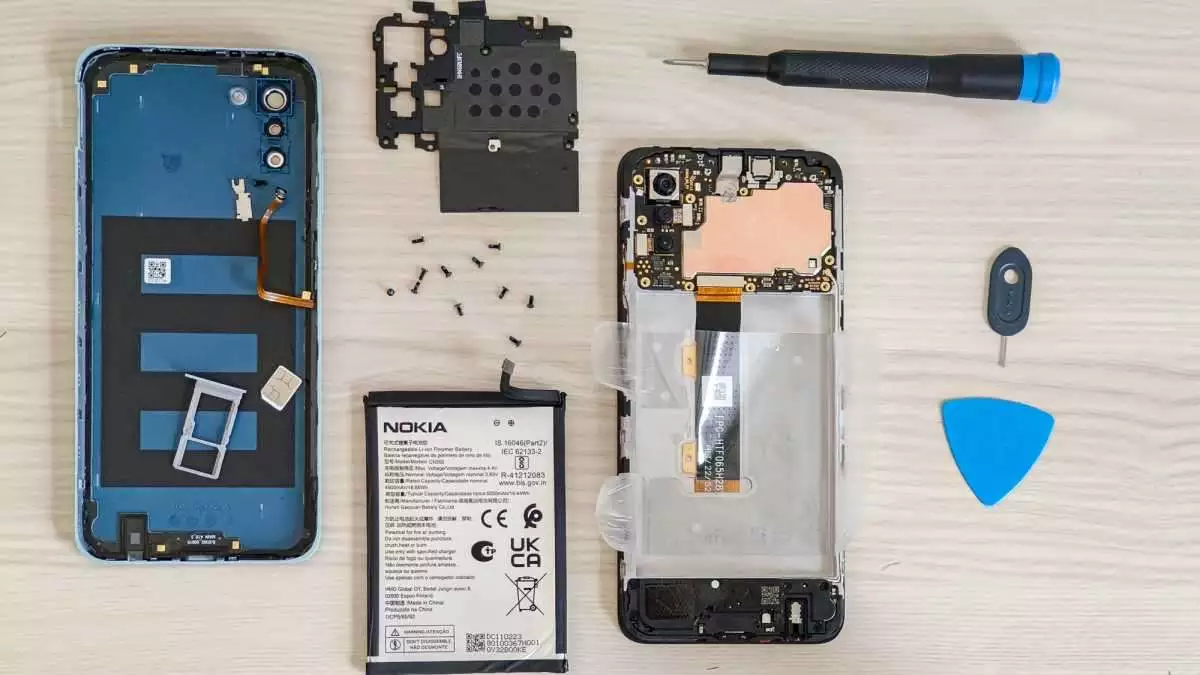
Screen & Speakers
- Unimpressive 720p display
- Up to 90Hz refresh rate
- One speaker with OZO playback
Nokia has sacrificed the display in order to maintain the price in the budget level. The G22 has a 6.5-inch 720p LCD display. While it is adequate for web browsing, videos and photos do not reach their full potential. It’s also difficult to read the display in broad sunshine due to glare.
Rival phones from manufacturers like Poco have far superior displays, so I’d recommend looking elsewhere if you spend a lot of time streaming on your phone.
While the phone has a refresh rate of up to 90Hz, it can only be set to adaptive (which switches between different refresh rates) or at 60Hz. There is no option to set it to high as the default.
The G22 sports a single bottom-firing speaker with OZO playback, a Nokia-developed technology that creates immersive audio. While the audio is quite loud for a phone without stereo speakers, it lacks the depth and color of more premium models and has a tinny feel. However, it was perfectly adequate for podcasts and Twitch streams.
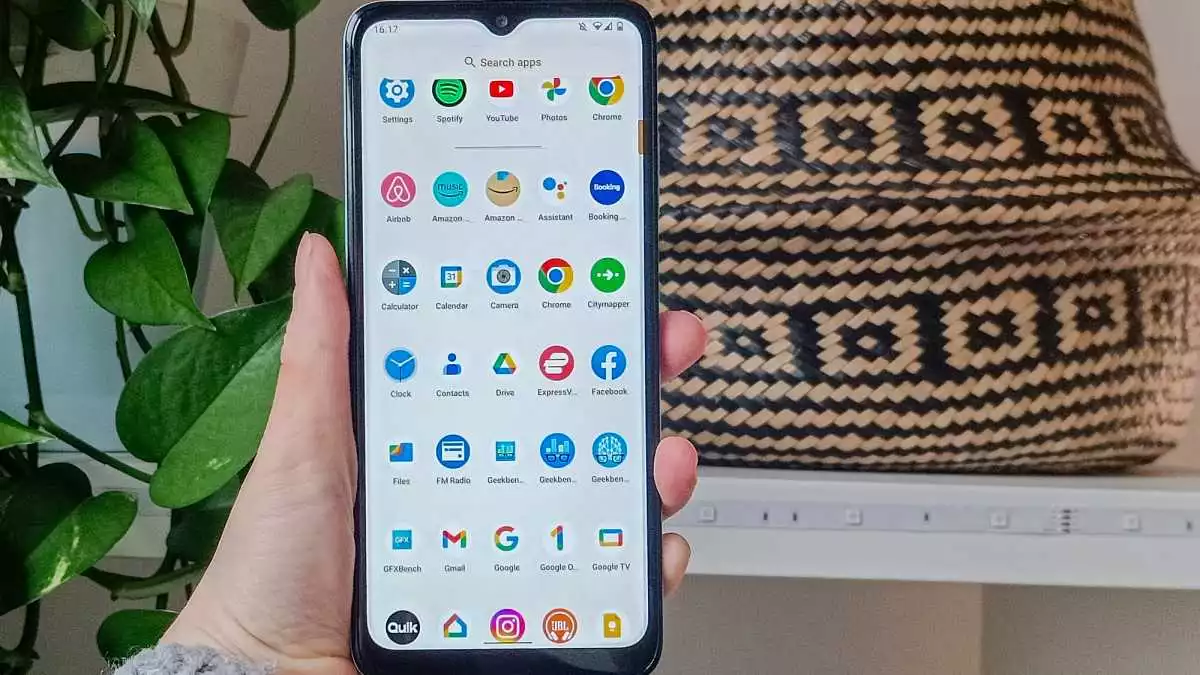
Specs & Performance
- Same processor as the G21
- 4GB RAM/128GB storage
- Laggy performance
One of the greatest drawbacks of the Nokia G22 is that it has the same Unisoc T606 chipset as the Nokia G21 from last year. We weren’t lovers of this chip back then, and we still aren’t. This phone’s performance is sluggish for many tasks, especially while booting up.
The Nokia G22 is mainly adequate for basic web surfing and social media use, albeit it stutters when scrolling quickly via apps like Facebook.
The phone has 4GB of RAM and 128GB of storage. If you want more capacity, the microSD slot may accommodate up to 2TB.
When it comes to performance and speed, the Nokia G22 is significantly surpassed by comparably priced phones in its price bracket. Below are the results of our official benchmarking tests:
Cameras
- Decent shots under bright sunlight
- Struggles in dimmer conditions
- Bokeh effect on selfie mode too strong
The Nokia G22 features a triple camera setup. This is driven by a 50Mp primary lens with an aperture of f/1.8, as well as a 2Mp depth camera and a 2Mp macro camera. Unfortunately, the G21, like its predecessor, lacks an ultrawide lens.
The results of budget smartphone cameras are frequently mixed, and the Nokia G22 follows this tendency. It works best in direct sunlight, with particular colors, such as the pink on blooming trees, standing out. The AI enhancement works great here.




However, even a cloudy day can sap some of the life from images, leaving tones washed out. Indoors, pictures look best with plenty of natural or artificial light. Dimmer lighting causes blurry or blurred features, and the night mode isn’t really impressive.
It has a digital zoom range of up to 6x, but I wouldn’t advocate using it because photos become highly noisy and blurry. The 2x zoom has some fuzziness as well, but it is still handy for close-ups of scenic images.
With the HDR setting enabled, the 8Mp selfie camera has a warmer hue to it and will suffice for video chats and the occasional selfie. When set to automatic, the bokeh effect in portrait mode is fairly intense, with numerous stray hairs fading into the background. If you choose, you can change the strength and form of this.
The G22 can record video in 1080p or 720p at 30 frames per second. There are no stabilisation modes, however the built-in microphones capture a good quantity of sound.
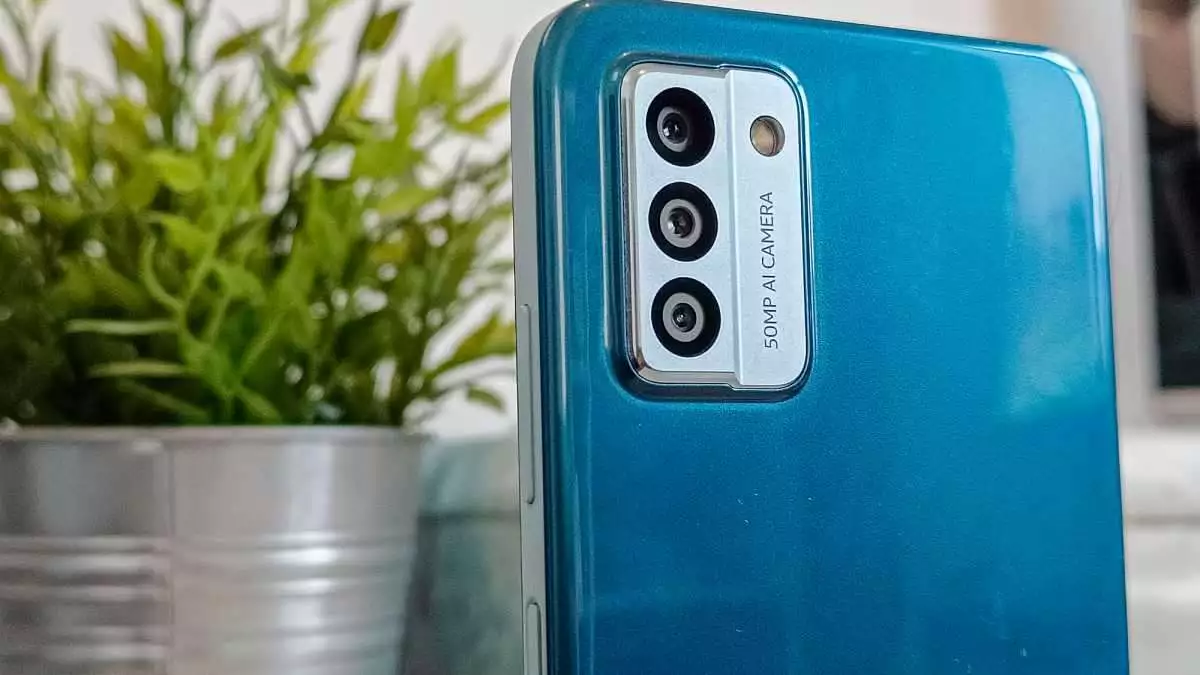
Battery Life & Charging
- Up to two days of average use
- 20W fast-charging, but no brick included
- No wireless charging
Nokia says that the 5050mAh battery on this phone may last up to three days, although that is with very conservative use, such as merely making calls and taking the occasional snap.
Depending on how much I used the phone for streaming, video chats, shooting photographs, and other activities, I found myself reaching for the charger every day and a half/two days. This was also utilizing the battery saver modes.
Using the PC Mark battery test, it lasted 12 hours and 6 minutes, which is comparable to the G21.
While the G22 supports up to 20W fast charging, it comes with only a USB-C cable and no charging brick. Nokia’s argument is to avoid waste, but this does imply that charging from a PC will take a long time – I only got a paltry 10% charge in 15 minutes from my laptop.
I charged the phone from 0% to 44% in 30 minutes using a faster charger I had laying around the home. Wireless charging is not supported, which is rather common for a phone of this budget.
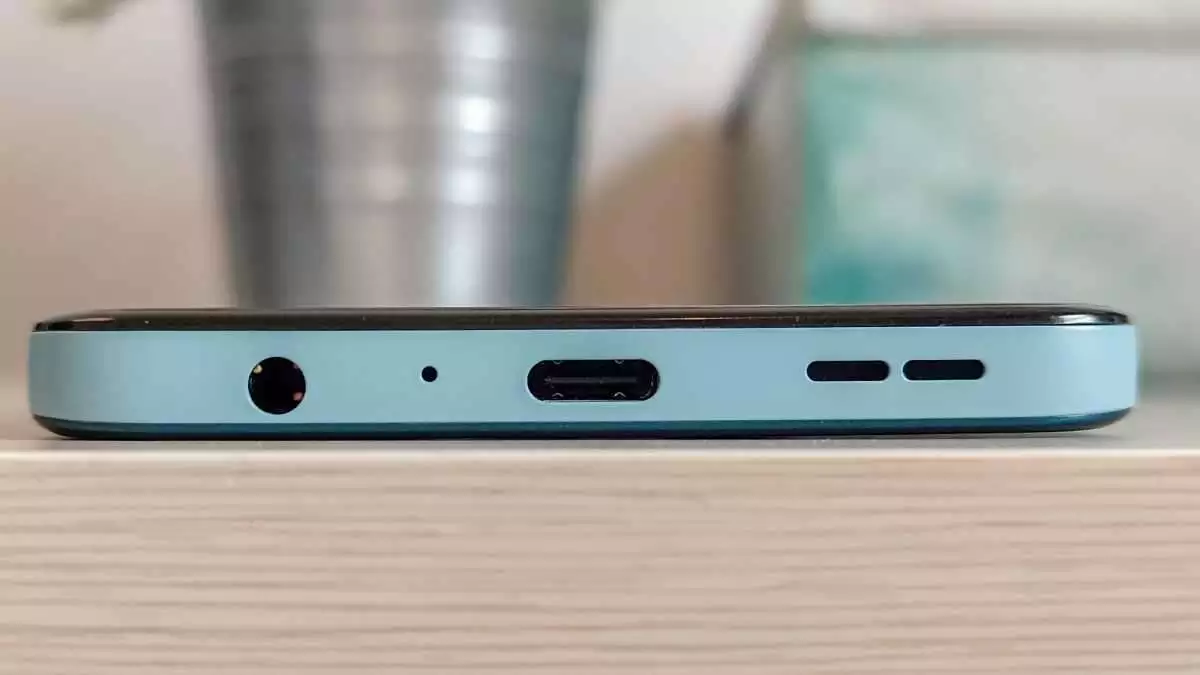
Software & Apps
- Android 12, not 13
- Two years of OS updates
- Three years of security updates
This phone has a significant edge over competitors such as Poco and Honor in that it offers a clean Android UI. This means it’s incredibly user-friendly, with no unnecessary program bloat.
It ships with Android 12 rather than Android 13, but Nokia has promised two years of OS upgrades, so it will be assured to reach Android 14. Security upgrades are also assured for three years.
Performance is pretty laggy on this phone for lots of tasks, especially when booting it up.
These figures are comparable to those of Asus and Realme, however Google and Samsung provide significantly longer battery life. Personally, I would have expected a phone made to endure to also deliver the same promise in software, thus this is disappointing.
It should be noted that the G22 only supports WiFi 5, not WiFi 6. It also does not support 5G.
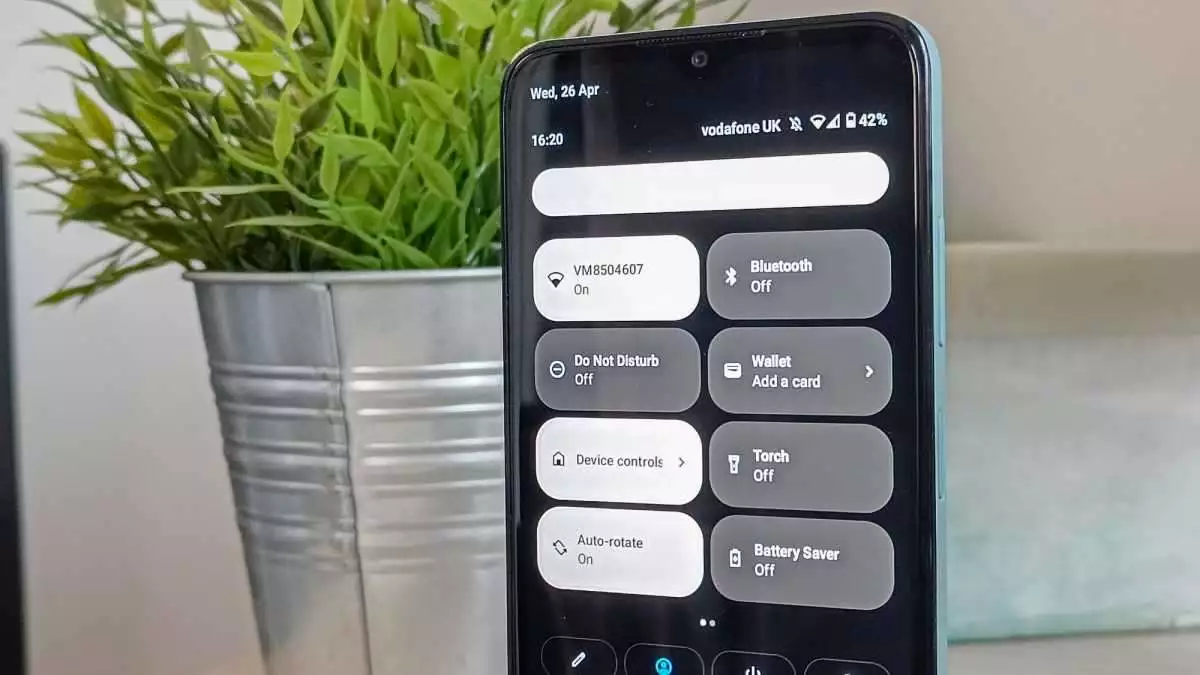
Price & Availability
The Nokia G22 originally cost about $168 and is still available for that price from retailers like as Amazon. Nokia, on the other hand, is now selling it for £169.99, with no opportunity to rent it through its Circular subscription system. At the time of writing, it was not accessible in the United States.
If you want to buy this phone because of its repairability, you should consider the cost of parts and tool kits. A new battery costs £22.99, a new display is $44.99, a rear cover is £22.99, and a charging port is £18.99. Meanwhile, an iFixit kit costs about $26.99, though this isn’t always necessary if you already have tools at home.
You could spend a little extra and get something like the Fairphone 4, which has a repairable design and OS upgrades up to Android 15. Alternatively, you could go for a more durable but less repairable budget buy, such as the Moto G62 – for more options, see our list of the best budget phones.
Specs
- Android 12
- 6.5in, LCD, 720p, 20:9 aspect ratio
- Unisoc T606
- 4GB RAM
- 128GB storage
- microSD card slot
- 50Mp Main camera, f/1.8
- 2Mp Depth sensor
- 2Mp Macro lens
- 8Mp Front camera
- WiFi 5
- Bluetooth 5.0
- 4G/3G supported
- Dual SIM
- 5050mAh
- 165x76x19.48mm
- 195g
- Launch colors: Meteor Grey and Lagoon Blue


